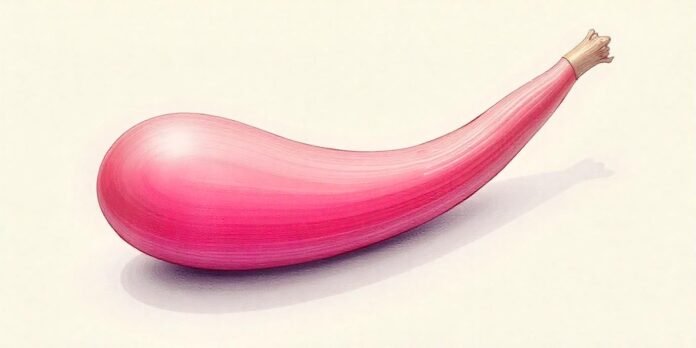Introduction
Anatomical drawing is a skill that requires precision, understanding, and technique. Mastering the art of drawing the male anatomy, specifically the penis, is essential for artists, medical illustrators, and those studying human anatomy. This guide will walk you through a step-by-step process, focusing on proportion, shading, and realistic details. Whether you are an aspiring artist or a professional illustrator, this tutorial will help you refine your skills with expert tips and practice exercises.
Understanding Basic Proportions
When drawing the male anatomy, proportions play a crucial role in achieving a natural and accurate representation. Here are some general guidelines:
- The flaccid penis typically measures between 2-4 inches, while the erect state varies between 5-7 inches on average.
- The width is usually proportionate to the length, tapering slightly towards the glans.
- The glans (head) is typically wider than the shaft and has a smooth transition.
- The positioning of the penis varies depending on perspective and anatomical context, such as standing or sitting poses.
Tools for Sketching Realistic Anatomy
Selecting the right tools is crucial for achieving detail and accuracy. Consider using the following:
- Graphite Pencils (2H for light sketching, HB for outlines, and 4B-6B for shading)
- Charcoal Pencils for deep shadows and texture
- Erasers (kneaded erasers for subtle highlights, standard erasers for corrections)
- Blending Stumps for smooth shading transitions
- Fine Liners or Ink Pens for defining edges and adding fine details
- Digital Drawing Tablets (for those working digitally)
Step-by-Step Drawing Process
Step 1: Sketch the Basic Shapes
Start by lightly sketching the basic structure:
- Draw a rough cylinder to represent the shaft.
- Add an oval or bell-shaped form at the tip for the glans.
- Sketch two symmetrical spheres or an oval for the testicles.
- Lightly outline the pubic area for context.
Step 2: Define the Form
- Refine the cylinder by adding subtle curves and slight tapering.
- Smoothly connect the glans to the shaft.
- Define the urethral opening with a small curved line at the tip.
- Add creases and folds where the shaft meets the testicles for realism.
Step 3: Shading and Depth
Shading enhances the three-dimensional appearance of your drawing:
- Use hatching and cross-hatching techniques for texture and depth.
- Blend shadows softly along the shaft and under the glans.
- Highlight the natural light source by erasing small sections for reflective areas.
- Add subtle veins if a more detailed representation is needed.
Step 4: Refining the Details
- Define skin texture with fine lines and shading.
- Smooth transitions between light and shadow.
- Add hair (if necessary) with short, controlled strokes.
- Refine the testicles with proper shading to give them volume.
Different Styles of Drawing Anatomy
There are various approaches to drawing the male anatomy depending on your artistic intent:
- Realistic Style: Emphasizes precise anatomical accuracy with detailed shading.
- Sketch Style: Loose and expressive with minimal details.
- Cartoon Style: Uses exaggerated proportions and simplified lines.
- Medical Illustration: Highly detailed, focusing on scientific accuracy.
Common Mistakes to Avoid
- Incorrect Proportions: Over-exaggeration or underrepresentation of length and width.
- Flat Shading: Neglecting proper shading techniques can make the drawing look two-dimensional.
- Lack of Detail: Avoid overly simplistic representations if aiming for realism.
- Poor Placement: Incorrect positioning within the body frame can make the drawing appear unnatural.
Conclusion
Mastering the drawing of male anatomy, particularly the penis, requires practice and attention to detail. By following this guide, you can improve your artistic precision, whether for artistic, educational, or medical purposes. Remember to use proper proportions, shading techniques, and refine details for the most accurate depiction. Keep practicing, and over time, your anatomical drawings will become more lifelike and professional.
FAQs
What are the basic proportions for drawing male anatomy?
The flaccid penis is typically 2-4 inches in length, while the erect state averages 5-7 inches. The glans is slightly wider than the shaft, and testicles are proportionally aligned.
What tools are best for sketching realistic anatomy?
Graphite pencils, charcoal, erasers, blending stumps, fine liners, and digital tablets are excellent tools for achieving detail and accuracy.
How can shading improve the realism of an anatomical drawing?
Shading adds depth, texture, and three-dimensionality. Techniques like hatching, cross-hatching, and blending help create a natural appearance.
Are there different styles of drawing anatomy?
Yes, styles range from realistic, sketch, cartoon, and medical illustration, each serving different artistic and educational purposes.
What are common mistakes when drawing male anatomy?
Errors include incorrect proportions, flat shading, lack of detail, and poor anatomical placement within the body frame.


